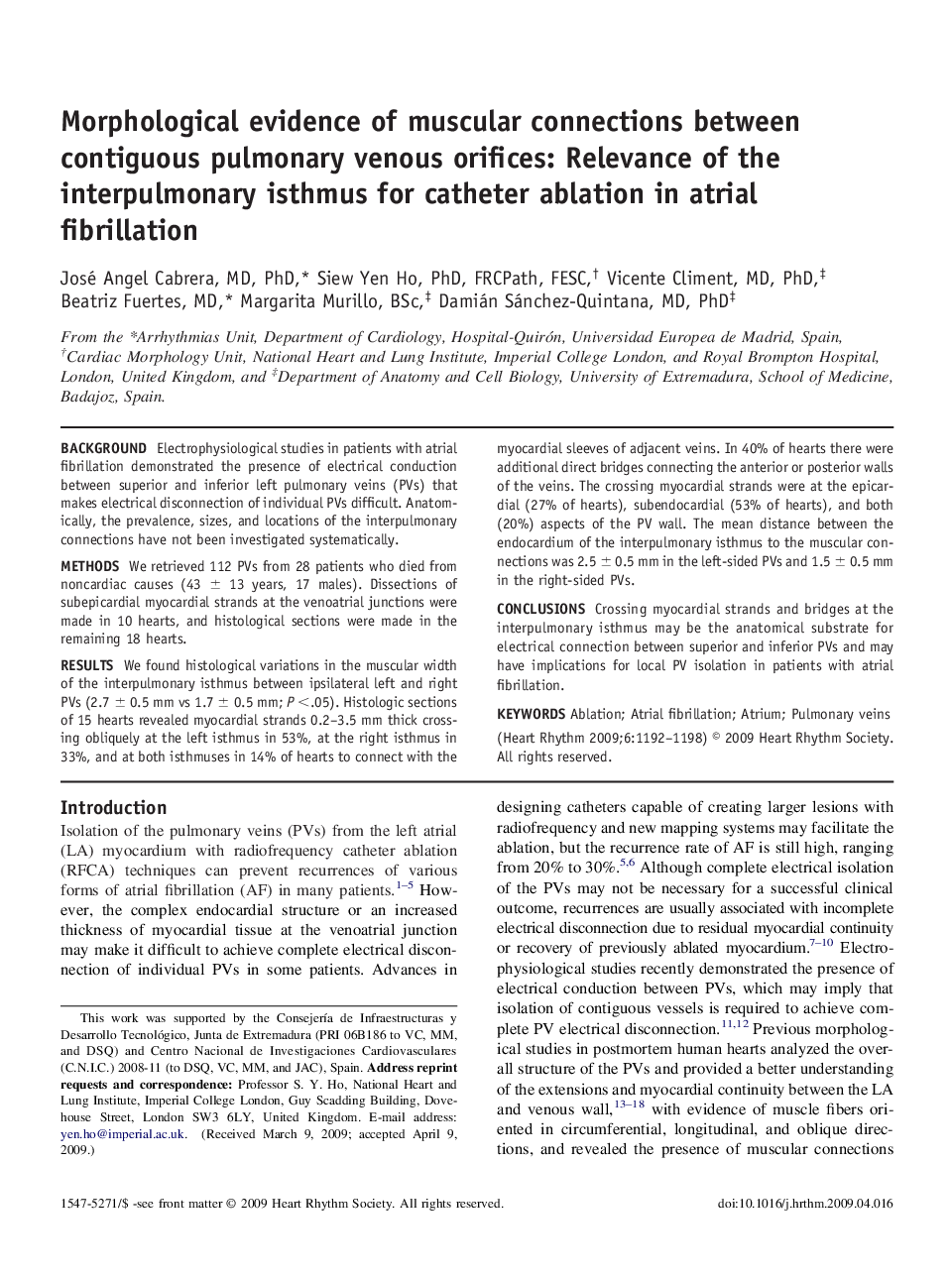| Article ID | Journal | Published Year | Pages | File Type |
|---|---|---|---|---|
| 2924018 | Heart Rhythm | 2009 | 7 Pages |
BackgroundElectrophysiological studies in patients with atrial fibrillation demonstrated the presence of electrical conduction between superior and inferior left pulmonary veins (PVs) that makes electrical disconnection of individual PVs difficult. Anatomically, the prevalence, sizes, and locations of the interpulmonary connections have not been investigated systematically.MethodsWe retrieved 112 PVs from 28 patients who died from noncardiac causes (43 ± 13 years, 17 males). Dissections of subepicardial myocardial strands at the venoatrial junctions were made in 10 hearts, and histological sections were made in the remaining 18 hearts.ResultsWe found histological variations in the muscular width of the interpulmonary isthmus between ipsilateral left and right PVs (2.7 ± 0.5 mm vs 1.7 ± 0.5 mm; P <.05). Histologic sections of 15 hearts revealed myocardial strands 0.2–3.5 mm thick crossing obliquely at the left isthmus in 53%, at the right isthmus in 33%, and at both isthmuses in 14% of hearts to connect with the myocardial sleeves of adjacent veins. In 40% of hearts there were additional direct bridges connecting the anterior or posterior walls of the veins. The crossing myocardial strands were at the epicardial (27% of hearts), subendocardial (53% of hearts), and both (20%) aspects of the PV wall. The mean distance between the endocardium of the interpulmonary isthmus to the muscular connections was 2.5 ± 0.5 mm in the left-sided PVs and 1.5 ± 0.5 mm in the right-sided PVs.ConclusionsCrossing myocardial strands and bridges at the interpulmonary isthmus may be the anatomical substrate for electrical connection between superior and inferior PVs and may have implications for local PV isolation in patients with atrial fibrillation.
